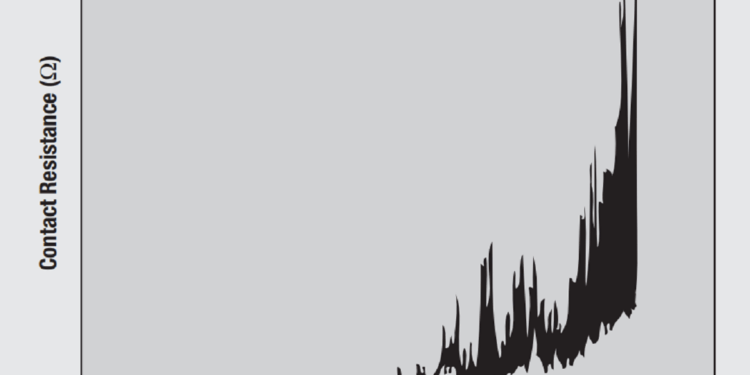For completeness it should be noted that there are several fretting degradation mechanisms:
Fretting Wear
All fretting motions will cause some degree of wear at the contact interface. The amount of wear will depend on the length of the fretting motion and the contact force. Fretting wear can become a concern when the amount of wear is sufficient to wear through the contact finish to the underplate or the base metal of the contact spring. Flash gold finishes, in addition to the earlier comment that they may not provide complete surface coverage, are particularly susceptible to fretting wear.
Fretting Corrosion
Fretting motions lead to fretting corrosion only in systems where the fretting surface is susceptible to corrosion. Examples of such systems include tin, nickel and palladium alloys. The palladium alloys are susceptible to fretting due to the 20 percent nickel or cobalt used in these alloys.
Fretting Polymer
Fretting or frictional polymer is a fretting degradation mechanism for palladium finishes. Palladium tends to catalyze organic contamination and during fretting motions the organics polymerize and create a polymer powder debris at the contact interface with the same effect as the oxide debris of fretting corrosion.































